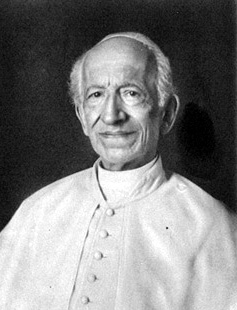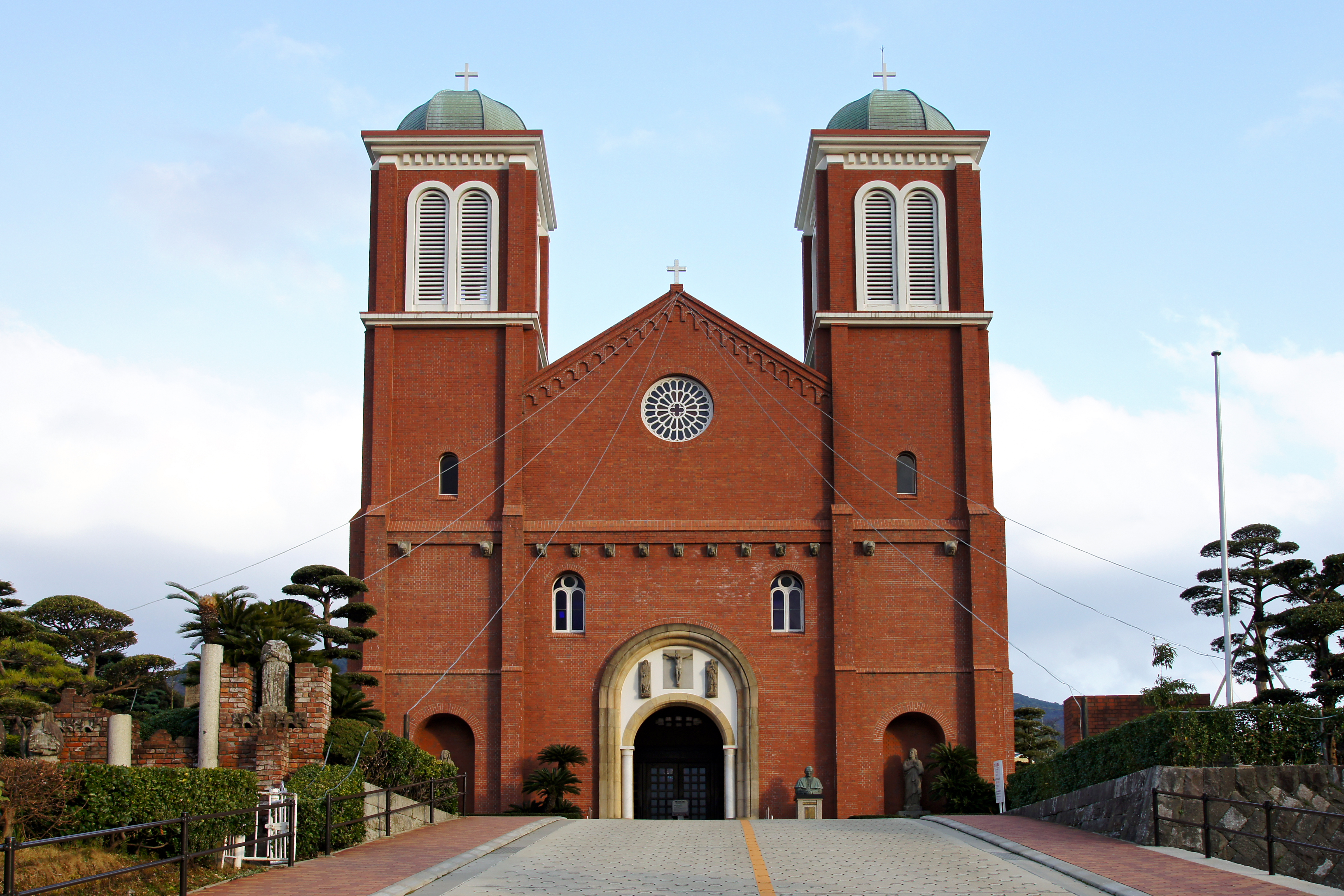|
Roman Catholic Diocese Of Sapporo
The Roman Catholic Diocese of Sapporo is a diocese belonging to the Roman Catholic church, under the Papal Primacy of Pope Francis, which is located in Sapporo, Japan. The diocese was formerly established as the Apostolic Prefecture of Sapporo on February 12, 1915. It was later lifted to the title of Apostolic Vicariate of Sapporo on March 30, 1929. Twenty-three years later, it was lifted to its current state, the Diocese of Sapporo, on December 11, 1952. This diocese under the Archdiocese of Tokyo, which is the metropolitan territory governing the Diocese of Sapporo and other diocesan territories, led by its archbishop, Tarcisio Isao Kikuchi. The diocesan seat of the bishop of Sapporo is the Guardian Angels Cathedral. The current bishop is Bernard Taiji Katsuya. History Foundations Roman Catholicism was established by Jesuit Missionaries, led by St. Francis Xavier who was a Jesuit Himself. The establishment of Catholicism by St Francis Xavier happened six years after ... [...More Info...] [...Related Items...] OR: [Wikipedia] [Google] [Baidu] |
Sapporo Cathedral
This is the list of cathedrals in Japan sorted by denomination. Roman Catholic Cathedrals of the Roman Catholic Church in Japan: * Cathedral Basilica of St. Francis Xavier (Kawaramachi Church) in Kyoto * Cathedral of the Blessed Virgin Mary (Tamatsukuri Church) in Osaka * Cathedral of Christ the King (Niigata Church) in Niigata * Cathedral of the Immaculate Heart of Mary (Kainan Church) in Naha * Cathedral of Our Lady of Victory (Daimyomachi Church) in Fukuoka * Cathedral of Our Lady of the Assumption (Memorial Cathedral of World Peace) (Noboricho Church) in Hiroshima * Cathedral of the Sacred Heart (Yamate Church) in Yokohama * Cathedral of St. Mary of the Immaculate Conception (Sekiguchi) in Tokyo * Cathedral of Sts. Peter and Paul (Nunoike Church) in Nagoya * Cathedral of St. Theresa of the Child Jesus (Urawa Church) in Urawa * Immaculate Conception Cathedral (Urakami Church) in Nagasaki * Kitaichijo Cathedral Church in Sapporo * Motoderakoji Cathedral Church in ... [...More Info...] [...Related Items...] OR: [Wikipedia] [Google] [Baidu] |
Roman Catholic Dioceses In Japan
The episcopate of the Catholic Church in Japan consists solely of a Latin hierarchy, joined in the Catholic Bishops' Conference of Japan. It comprises sixteen ecclesiastical territories, called (arch)dioceses, led by residential prelate bishops: three archdioceses, led by Metropolitan Archbishops, whose ecclesiastical provinces of the Roman Catholic Church include a total of thirteen suffragan sees. There are no Eastern Catholic, pre-diocesan or other exempt jurisdictions. There are no titular sees. All defunct jurisdictions have current successor sees. There is an Apostolic Nunciature to Japan as papal diplomatic representation at embassy-level in national capital Tokyo. Current Latin dioceses Ecclesiastical Province of Nagasaki * Metropolitan Archdiocese of Nagasaki **Diocese of Fukuoka ** Diocese of Kagoshima ** Diocese of Naha ** Diocese of Oita Ecclesiastical Province of Osaka * Metropolitan Archdiocese of Osaka ** Diocese of Hiroshima ** Diocese of Kyoto ** D ... [...More Info...] [...Related Items...] OR: [Wikipedia] [Google] [Baidu] |
Footnotes
A note is a string of text placed at the bottom of a page in a book or document or at the end of a chapter, volume, or the whole text. The note can provide an author's comments on the main text or citations of a reference work in support of the text. Footnotes are notes at the foot of the page while endnotes are collected under a separate heading at the end of a chapter, volume, or entire work. Unlike footnotes, endnotes have the advantage of not affecting the layout of the main text, but may cause inconvenience to readers who have to move back and forth between the main text and the endnotes. In some editions of the Bible, notes are placed in a narrow column in the middle of each page between two columns of biblical text. Numbering and symbols In English, a footnote or endnote is normally flagged by a superscripted number immediately following that portion of the text the note references, each such footnote being numbered sequentially. Occasionally, a number between brack ... [...More Info...] [...Related Items...] OR: [Wikipedia] [Google] [Baidu] |
Roman Catholicism In Japan
, native_name_lang = , image = File:Tabira Catholic Church 01.jpg , imagewidth = 300px , alt = , caption = The Tabira Catholic Church, Hirado, Nagasaki , abbreviation = , type = National polity , main_classification = Catholic , orientation = Asian Christianity , scripture = Bible , theology = Catholic theology , polity = , governance = Catholic Bishops' Conference of Japan , structure = , leader_title = Pope , leader_name = Pope Francis , leader_title1 = CBCJ President , leader_name1 = Tarcisio Isao Kikuchi, Archbishop of Tokyo , leader_title2 = Apostolic Nuncio , leader_name2 = Leo Boccardi , leader_title3 = , leader_name3 = , fellowships_type = , fellowships = , fellowships_type1 = , fellowships1 = , division_type = , division = , division_type1 ... [...More Info...] [...Related Items...] OR: [Wikipedia] [Google] [Baidu] |
Congregation For The Evangelization Of Peoples
A congregation is a large gathering of people, often for the purpose of worship. Congregation may also refer to: * Church (congregation), a Christian organization meeting in a particular place for worship *Congregation (Roman Curia), an administrative body of the Catholic Church ** Congregation for Bishops **Congregation for the Causes of Saints **Sacred Congregation of Rites *Religious congregation, a religious institute of the Catholic Church in which simple vows are taken *Congregation (group of houses), a subdivision of some religious institutes in the Catholic Church *Qahal, an Israelite organizational structure often translated as ''congregation'' * Congregation (university), an assembly of senior members of a university * The general audience in a ward in The Church of Jesus Christ of Latter-day Saints Music * The Congregation (band), an English pop group, sold in the US and Canada as The English Congregation * ''Congregation'' (The Afghan Whigs album) **"Congregation", ... [...More Info...] [...Related Items...] OR: [Wikipedia] [Google] [Baidu] |
Caritas Internationalis
Caritas Internationalis is a confederation of 162 Catholic relief, development and social service organizations operating in over 200 countries and territories worldwide. Collectively and individually, their missions are to work to build a better world, especially for the poor and oppressed. The first Caritas organization was established by Lorenz Werthmann on 9 November 1897 in Freiburg (headquarters for Germany). Other national Caritas organizations were soon formed in Switzerland (1901) and the United States (Catholic Charities, 1910). History In July 1924, during the international Eucharistic Congress in Amsterdam, 60 delegates from 22 countries formed a conference, with headquarters at Caritas Switzerland in Luzern. In 1928, the conference became known as Caritas Catholica. The delegates met every two years until the outbreak of the Second World War when all activities came to a standstill. Work resumed in 1947, with the approval of the Secretariat of State, and two con ... [...More Info...] [...Related Items...] OR: [Wikipedia] [Google] [Baidu] |
Roman Catholic Diocese Of Niigata
The Roman Catholic Diocese of Niigata ( la, Niigataën(sis), Japanese: カトリック新潟教区 ) is a diocese located in the city of Niigata in the Ecclesiastical province of Tokyo in Japan. The apparitions of Our Lady of Akita were within its territory and Bishop John Shojiro Ito initially approved the apparitions in 1984. History French botanist Father Urbain Faurie was one of the early missionaries to the Niigata area, who arrived in Japan in July 1873. On August 13, 1912, the Apostolic Prefecture of Niigata was established from part of the Diocese of Hakodate. The first Apostolic Prefect was Msgr. Joseph Reiners S.V.D. of the Society of the Divine Word. On April 16, 1962 the Prefecture was raised to a Diocese; the first bishop was John Shojiro Ito. In 1984, the Grey Nuns of the Cross (Sisters of Charity of Ottawa) established the Élisabeth Bruyère Convent in the city of Yamagata, where they worked closely with the Missionaries of the Sacred Heart. The sisters' apos ... [...More Info...] [...Related Items...] OR: [Wikipedia] [Google] [Baidu] |
Peter Toshio Jinushi
Peter Toshio Jinushi (20 September 1930 – 4 May 2021) was a Japanese Roman Catholic bishop. He was ordained to the priesthood in 1960 and served as bishop of the Roman Catholic Diocese of Sapporo The Roman Catholic Diocese of Sapporo is a diocese belonging to the Roman Catholic Church, Catholic church, under the Papal Primacy of Pope Francis, which is located in Sapporo, Sapporo, Japan. The diocese was formerly established as the Apost ... from 1987 to 2009. References 1930 births 2021 deaths 20th-century Roman Catholic bishops in Japan 21st-century Roman Catholic bishops in Japan People from Sapporo Japanese Roman Catholic bishops {{RC-bishop-stub ... [...More Info...] [...Related Items...] OR: [Wikipedia] [Google] [Baidu] |
Second Vatican Council
The Second Ecumenical Council of the Vatican, commonly known as the , or , was the 21st Catholic ecumenical councils, ecumenical council of the Roman Catholic Church. The council met in St. Peter's Basilica in Rome for four periods (or sessions), each lasting between 8 and 12 weeks, in the autumn of each of the four years 1962 to 1965. Preparation for the council took three years, from the summer of 1959 to the autumn of 1962. The council was opened on 11 October 1962 by Pope John XXIII, John XXIII (pope during the preparation and the first session), and was closed on 8 December 1965 by Pope Paul VI, Paul VI (pope during the last three sessions, after the death of John XXIII on 3 June 1963). Pope John XXIII called the council because he felt the Church needed “updating” (in Italian: ''aggiornamento''). In order to connect with 20th-century people in an increasingly secularized world, some of the Church's practices needed to be improved, and its teaching needed to be presente ... [...More Info...] [...Related Items...] OR: [Wikipedia] [Google] [Baidu] |
Paris Foreign Missions Society
The Society of Foreign Missions of Paris (french: Société des Missions Etrangères de Paris, short M.E.P.) is a Roman Catholic missionary organization. It is not a religious institute, but an organization of secular priests and lay persons dedicated to missionary work in foreign lands. The Society of Foreign Missions of Paris was established 1658–63. In 1659, instructions for establishment of the Paris Foreign Missions Society were given by Rome's Sacred Congregation for the Propagation of the Faith. This marked the creation of a missionary institution that, for the first time, did not depend on the control of the traditional missionary and colonial powers of Spain or Portugal. In the 350 years since its foundation, the institution has sent more than 4,200 missionary priests to Asia and North America. Their mission is to adapt to local customs and languages, develop a native clergy, and keep close contacts with Rome.Missions, p.4 In the 19th century, local persecutions of ... [...More Info...] [...Related Items...] OR: [Wikipedia] [Google] [Baidu] |
Hakodate
is a city and port located in Oshima Subprefecture, Hokkaido, Japan. It is the capital city of Oshima Subprefecture. As of July 31, 2011, the city has an estimated population of 279,851 with 143,221 households, and a population density of 412.83 persons per km2 (1,069.2 persons per sq. mi.). The total area is . The city is the third biggest in Hokkaido after Sapporo and Asahikawa. History Hakodate was Japan's first city whose port was opened to foreign trade in 1854, as a result of Convention of Kanagawa, and used to be the most important port in northern Japan. Also, the city had been the biggest city in Hokkaido before the Great Hakodate Fire of 1934. Pre-Meiji restoration Hakodate (like much of other parts of Hokkaido), was originally populated by the Ainu. They lived in the Oshima Peninsula. The name "Hakodate" may have originated from an Ainu word, "hak-casi" ("shallow fort"). Another possibility is that it means "box" or "building" in Japanese which refers to the castl ... [...More Info...] [...Related Items...] OR: [Wikipedia] [Google] [Baidu] |






